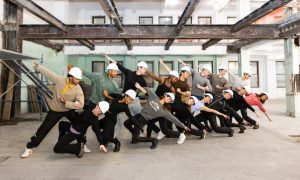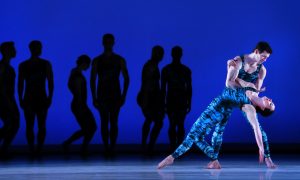Nothing can replace taking class for developing technique and artistry, of course. But learning about dance history, contemporary choreographers and companies, technique and performance tips is possible through mindful internet use and taking advantage of options in your community. Options such as work-study, student rates, performing with certain teachers for reduced class rates and auditions (which are often essentially free classes) are ways to take class for cheap. Read on for tips on how to learn more about dance in these two main ways.
#1. Take advantage of the web.
Just about everything can be found online in this day in age — enough so that one could literally spend the majority of waking hours online investigating a single discipline. With videos, articles, blogs, audiobooks, courses and more, that’s certainly true of dance. No one is advocating for shutting oneself in with devices all day, in the name of learning; as artists and as people, we need to live well-rounded lives. Discretion and balance are key.
Yet in even a few hours a week online, we dancers can learn a whole lot about our art form, completely for free (apart from that spent on a wireless or mobile data plan, or course costs, perhaps). Try reading up on dance companies that you’ve heard a bit about, that intrigue you, but which you’d like to learn more about. Interested in certain countries or areas of the world? Read up on dance in those regions.
With all of these options come a plethora of videos — of performances, classes, interviews with dancers and executive staff and more. YouTube, Vimeo and dance company websites (sometimes offered through the former two) are good search tools and platforms for these resources. Nothing can quite replace viewing high-caliber dance in the flesh, or in-person dialogue with artists and other artistic personnel, but these options can offer something special. You may see something in a video that sparks a choreographic avenue of your own, or a new focus for your technique development.
All of this holds true for reading dance criticism. You can gain perspectives on technique, artistry and performance that you might never before have encountered. Honing your critical lens for dance can also allow you to be a more effective collaborator in rehearsals as a choreographer, teacher and more. Check back in at Dance Informa for fresh reviews, with new ones published weekly!
And don’t forget social media. While the risks and downsides are quite real, it can also be an effective networking and learning tool. As with all of the above, with moderation and good judgement it can truly help rather than hurt. If the world is moving online, why not join in the conversation there and learn how to do that to your advantage?
#2. Classes on the cheap.
On the other hand, nothing can replace practice, practice, practice — in the flesh. Work-study positions are a great option for obtaining free or low-cost classes, if the time commitment and other associated logistics work out in your unique situation. Keep your eyes honed for deals as well. At the Dance Complex (in Cambridge, MA), for instance, the first of the Deep Dance and Midday Movement Series are only $5. Buying class packages also at least often lowers the per-class cost, if you might be able to make the investment.
Otherwise, don’t be afraid to have conversations about how you and certain teachers can make it work for both of you. Perhaps you can assist at their rehearsals, help with show promotion or with technical show aspects if they’re showing work anytime soon, in exchange for free or reduced-cost classes. Those things could be valuable learning experiences in themselves. If teachers are looking for dancers, and you can reliably attend their classes, they might also be able to offer reduced-cost classes.
Also keep your eyes peeled for free classes associated with festivals and other celebrations. It’s summer, and many of those are happening all around the country, in- and outdoors. There’s also the classic option of auditions; dancers have long been aware that whether or not you’re cast or hired, they can be free classes (some auditions do have a registration fee). With all of these options, you don’t have to forgo taking classes just because of lack of funds. Yes, it can be tricky, and even feel tiring, to make some of these options work. As cliché as it is, it really does apply here — where there’s a will, there really can be a way.
By Kathryn Boland of Dance Informa.















